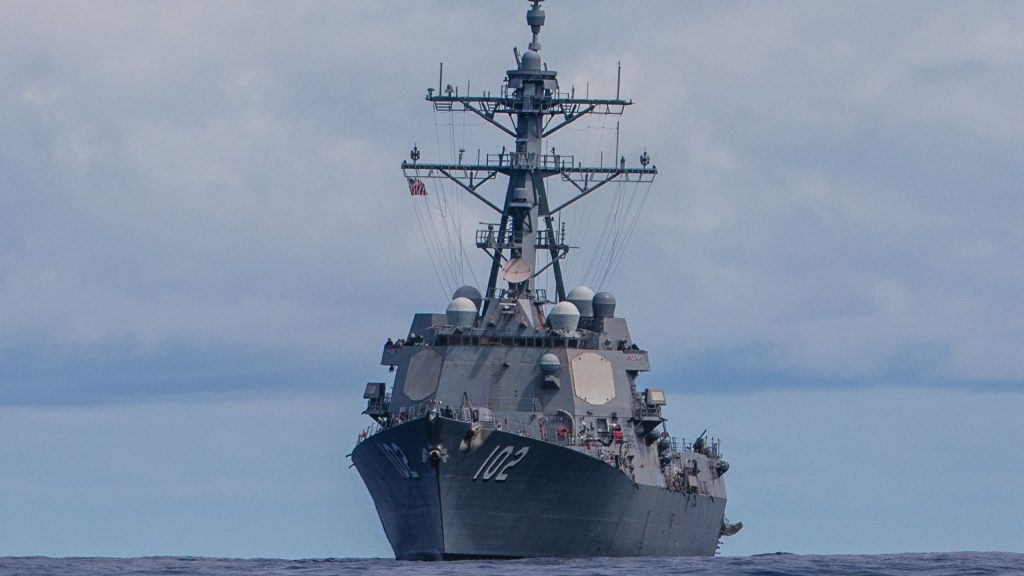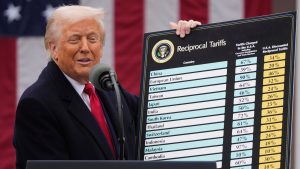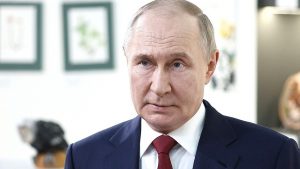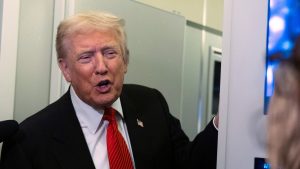US deploying destroyers, Venezuela deploying militia

The United States is deploying three Navy destroyers to waters near Venezuela, escalating its confrontation with President Nicolás Maduro, whom Washington accuses of narco-terrorism and long-standing ties to Colombian militants.
President Donald Trump ordered the USS Gravely, USS Jason Dunham and USS Sampson — all Arleigh Burke-class guided missile destroyers — into the Caribbean as part of an expanded counternarcotics mission. Each ship carries dozens of Tomahawk cruise missiles, advanced radar systems and deck guns designed for sea and land targets.
The move is framed as part of an effort to disrupt drug cartels that Washington says use Venezuela as a hub to traffic cocaine and fentanyl into the United States. Retired Admiral James Stavridis told The Wall Street Journal while deploying such heavily armed warships for drug interdiction is “overkill,” it nonetheless sends a strong signal to Maduro.
Venezuela pushes back
Caracas responded defiantly. Maduro said Venezuela would “defend our seas, our skies and our lands” against what he called “bizarre rehashes” from an empire unable “to subdue a free and sovereign people.” In recent weeks, he ordered the mobilization of more than 4.5 million militia members across the country. Maduro’s plan calls for putting militia members “in all factories and workplaces in the country,” where they will be provided “missiles and rifles” to defend their homeland.
The U.S. and Venezuela severed diplomatic ties in 2019 during Trump’s first term, and since then, Washington has refused to recognize Maduro’s government. The relationship only worsened as U.S. courts and the State Department accused Maduro of running the Cartel de Los Soles, a criminal network linked to the Revolutionary Armed Forces of Colombia (FARC). Reuters reports the cartel worked with the FARC for more than two decades, trafficking cocaine by sea and air while bribing Venezuelan officials for access to ports and radar data.
In response to those findings, the U.S. increased its reward for Maduro’s capture to $25 million. The reward was recently upped again to $50 million. Earlier this year, the Venezuelan-based Tren de Aragua gang was also designated a foreign terrorist organization by the State Department.
Military overmatch
Though the destroyers bring overwhelming firepower, they are not configured for a ground invasion. They lack amphibious capabilities or Marine Expeditionary Units that would allow large-scale troop movements onto Venezuelan soil. Instead, the ships are expected to serve as intelligence-gathering platforms, launch points for smaller interdiction craft and visible symbols of U.S. resolve.
The deployment comes amid broader military expansion in the region. About 4,000 sailors and Marines, several P-8 surveillance planes, and even an attack submarine will all reportedly be operating in the southern Caribbean soon. These forces are authorized to conduct interdictions directly, rather than the traditional supporting role the Navy plays alongside the Coast Guard.
From interdiction to escalation
The Navy has already been active in drug enforcement. Earlier this month, the USS Sampson seized nearly 1,300 pounds of cocaine in the eastern Pacific with support from a Coast Guard detachment and a Navy helicopter. But the new mission marks the first time Navy destroyers will take the lead in a counternarcotics role in Latin America.
While there is no indication that the U.S. plans to invade Venezuela, the range of Tomahawk missiles — about 1,500 miles — means the destroyers could hit any target inside the country if ordered. For now, however, the message remains focused: Washington wants to cut off the drug pipelines flowing north.
As former Vice Admiral John Miller told The Wall Street Journal, the warships may never fire a missile at smugglers, but they send “a strong signal to Maduro that his narco-terrorist assault on the U.S. will no longer be tolerated.”





